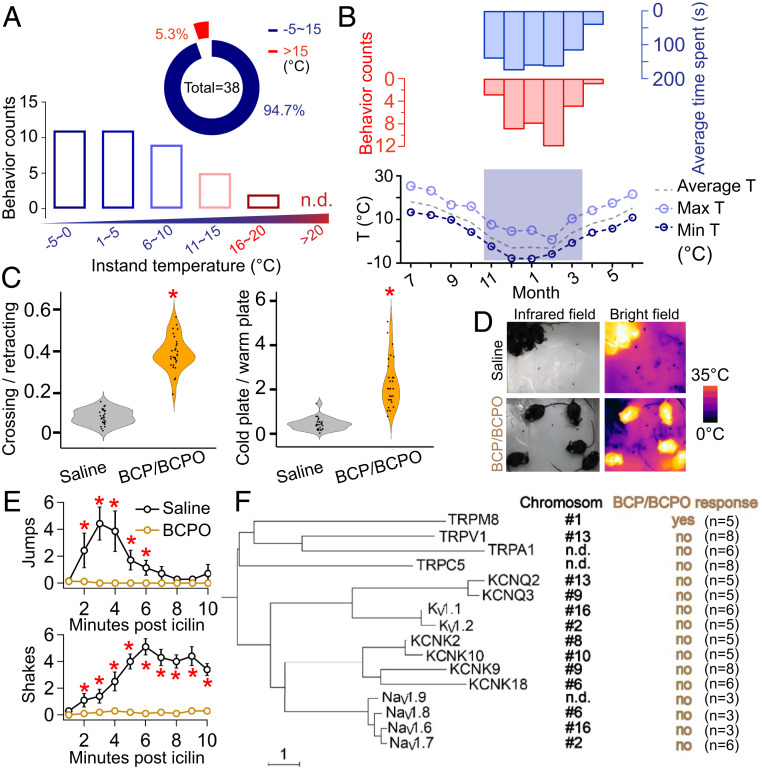Fig. 3.
HMR behavior is temperature related. (A) Relationship between infrared camera-trap number and ambient temperature. (Inset) Ratio of HMR behaviors in two temperature ranges: −5 to 15 °C, in blue; above 15 °C, in red. (B) The relationship between HMR behavior (indicated by behavior number and average time spent) and local climate data. (C) Summary of crossing and retracting behavior when mice were challenged with the cold plate (Left), the y axis represents the ratio of behavior counts. Temperature preference testing for saline-treated and BCP/BCPO-treated mice (Right), the y axis represents the ratio of behavior counts. Warm plate set at 28 °C, cold plate set at 10 °C. *P < 0.001. (D) Images of the representative behavior saline-treated and BCP/BCPO-treated mice at 4 °C. The pictures show representative thermal images (Right) and normal images (Left). (E) Intraperitoneal (i.p.) injection of BCPO reduced jumping behavior of mice (n = 8 for each group) induced by i.p. injection of icilin (Top). The i.p. injection of BCPO reduced shaking behavior of rats (n = 10 for each group) induced by i.p. injection of icilin (Bottom). For mice, icilin and BCPO dissolved in propylene glycol with final concentration of 10 mg/kg and 100 μmol/kg, respectively. For rats, icilin and BCPO dissolved in propylene glycol with final concentrations of 1 mg/kg and 100 μmol/kg, respectively. *P < 0.05. (F) Phylogenetic tree of molecular thermal detectors and transducers in panda. The location on chromosomes (in black), BCP/BCPO responses (in yellow), and sample sizes are shown. The 100 μM menthol, 1 μM capsaicin, 100 μM AITC (allyl isothiocyanate), and 50 μM Gd3+ were used to activate TRPM8, TRPV1, TRPA1, and TRPC5, respectively. n.d., no data, indicating that this gene is absent in the chromosome-level giant panda draft genome (20).

